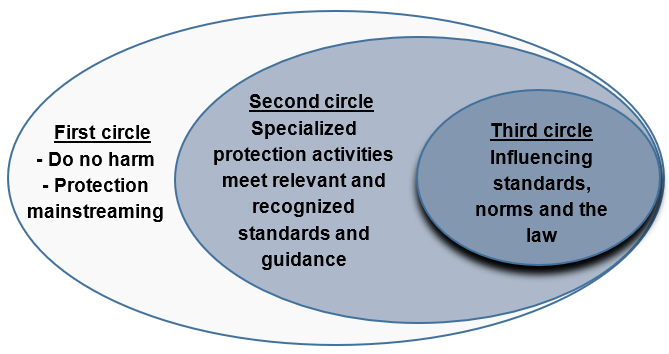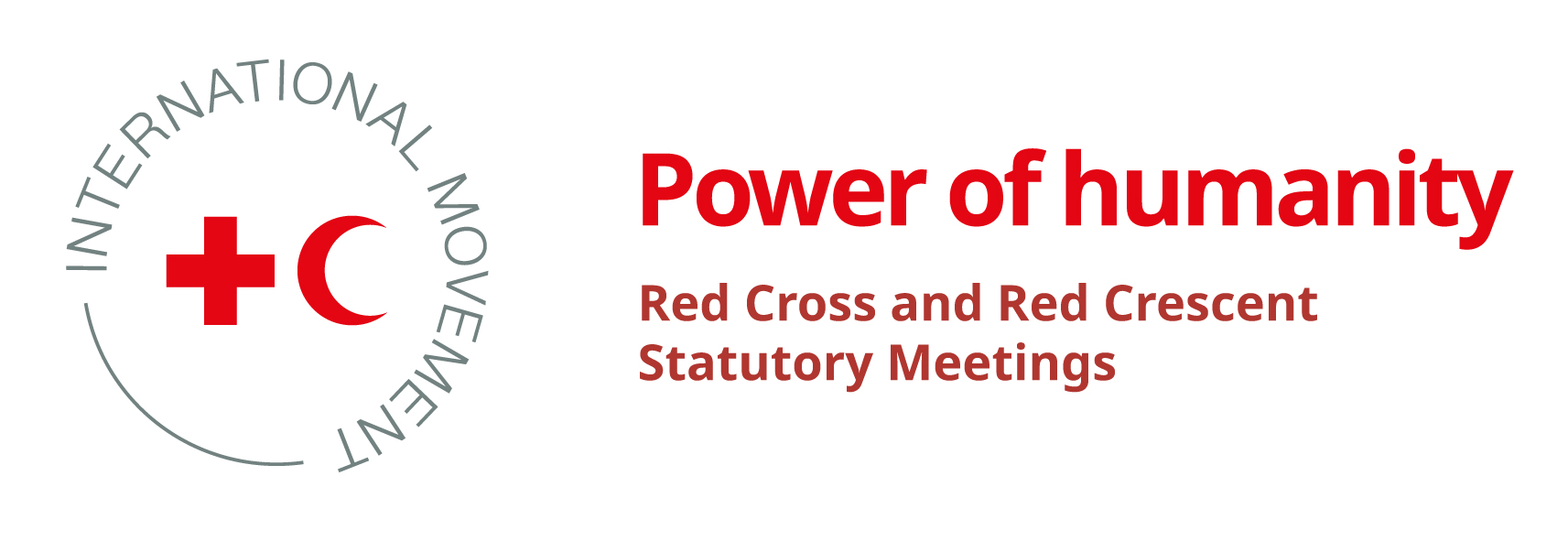Protection in the International Red Cross and Red Crescent Movement: Building a collaborative, coherent and complementary approach
March 2022
As new crises emerge and existing crises deepen, millions of people around the world need to be protected from various forms of harm and violations of their rights. The risks that people face are increasingly diverse and complex, and tailor-made solutions are required to meet their needs. As a result, more organizations have started to engage in protection work, which means that protection is increasingly being placed at the heart of humanitarian action.
While there has been a widespread recognition of the importance of inclusive programming, which puts affected people at the centre of a response and supports protection outcomes (including in service delivery), serious gaps remain in reducing protection risks and in our collective ability to help safeguard the lives and dignity of people affected by armed conflict and other violence.

Driven by its mission and Fundamental Principles, the Movement seeks to ensure that affected people receive the protection they are entitled to under international and domestic law.
In 2017, the Protection in the Movement initiative was launched, supported by a Movement Protection Advisory Board comprising the International Committee of the Red Cross (ICRC), the International Federation of Red Cross and Red Crescent Societies (IFRC) and eight National Societies.
The advisory board aims to promote a common understanding of protection and to enhance coherence through increased cooperation, coordination and exchanges, in particular through an online community of practice. In 2018, the advisory board developed the Movement Protection Framework, which sets out three interrelated levels of protection action (see image) and encompasses the wide variety of protection actions that Movement components carry out.
Since the creation of this framework, several strategic and operational initiatives have been implemented by all Movement components, with the aim of achieving greater collaboration, coherence and complementarity in protection work. These include the Minimum Protection Approach, the IFRC’s draft Protection, Gender and Inclusion (PGI) Policy and operational framework (submitted to the IFRC General Assembly), the Movement strategy on migration, the Restoring Family Links platforms and the 2019 Council of Delegates Resolution “Strengthening implementation of the Movement Policy on Internal Displacement: Ten years on”.
Enablers and barriers
Building on this experience, the advisory board launched a process to consider the possible adoption of a resolution on protection in the Movement at the 2023 Council of Delegates. A consultation workshop with Movement protection working groups was held in February 2022, which identified needs and gaps in the current protection response of the Movement and how, in their opinion, this collective work could be improved.
The 46 participants, representing 22 different working groups, identified the following enablers:
- the strength of the Movement’s Fundamental Principles
- the unique mandates of each Movement component, including the auxiliary role of National Societies
- the importance of the Movement’s local and long-term presence, and its reach through volunteers and branches
- strong technical capacity in key thematic protection areas across the Movement
- the existing Movement global standards, frameworks, tools and mechanisms and their pragmatic implementation
- the existing and emerging peer-to-peer exchange of experience and knowledge.
In contrast, the participants identified the following as the main barriers to effective implementation of protection work:
- a lack of clarity about concepts (e.g. the scope of protection within humanitarian work generally and within the Movement, and the relationship between the approaches described above)
- a lack of clarity about the protection role and activities of each Movement component
- gaps in knowledge and capacity in implementing sometimes complex standards, frameworks and tools
- the resource-intensive mechanisms required for internal and external coordination
- insufficient financial and human resources to meet all protection-related needs
- gaps in leadership support for protection action in all Movement components.
Very similar enablers and barriers have been highlighted in other Movement processes linked to protection work, such as in the wide-ranging consultation that led to the development of the IFRC’s PGI policy and the recent review of protection trends. Similar issues related to leadership, coordination, conceptual clarity and inclusiveness were also highlighted in a recent Inter-Agency Standing Committee review of protection implementation in the wider humanitarian community.
Next steps
To build on the considerable progress made in recent years to put protection at the core of the Movement’s work, the challenges identified above indicate where the Movement should focus its efforts and how it should move forward, both internally and in cooperation with external partners.
To improve outcomes for at-risk people, any possible resolution on protection should be practical, pragmatic and solution-focused in order to address the main barriers. By building on the progress and initiatives mentioned above, the Movement approach could become more collaborative, coherent and complementary, and it could make a greater contribution to improving protection outcomes for at-risk people.
The joint workshop on Protection in the Movement will be held on 12 April as part of the 2022 Council of Delegates. It will help identify the possible risks and benefits of a future resolution, and it will consolidate progress made during the consultation on core protection issues and how they can be most effectively addressed collectively by the Movement.
Overall objectives and expected outcomes
On 12 April 2022, we will hold a Protection in the Movement workshop, with the aim of:
• highlighting cooperation initiatives between Movement components that address issues such as common and complementary understanding and approaches to protection
• telling the stories of Movement protection work, with successful experiences and challenges
• collecting input and feedback through interactive exercises about key issues of concern to inform the development of a possible global Movement resolution on protection at the 2023 Council of Delegates.
The International Committee of the Red Cross, the International Federation of Red Cross and Red Crescent Societies, and the Standing Commission of the Red Cross and Red Crescent, in its function as Trustee of the International Conference of the Red Cross and Red Crescent (the Conference), cannot be held responsible or liable in any manner for any user-generated content or posts on this Database. In the event that the Website team considers any post or content to be incompatible with the Fundamental Principles of the International Red Cross and Red Crescent Movement and/or with the objectives of the Conference, it reserves the right to remove such content.




